How Can We Use Laser Scanning For Historic Preservation?
Last Updated on 25th April 2022 How can we use laser scanning… Read More »How Can We Use Laser Scanning For Historic Preservation?
Last Updated on 25th April 2022 How can we use laser scanning… Read More »How Can We Use Laser Scanning For Historic Preservation?
Location: United Kingdom
ZEB Scanner: ZEB Horizon
Scan time: 45 Minutes
Would you like to see a specific dataset that’s not on this page? Contact [email protected]
Last Updated on 25th April 2022 Why is Geospatial Information so Important?… Read More »Why is Geospatial Information so Important?
Location: California, USA
ZEB Scanner: ZEB Horizon
Scan time: 6 Minutes
This data was captured with the ZEB Horizon mounted to a vehicle using our car mount.
Would you like to see a specific dataset that’s not on this page? Contact [email protected]
Location: Ornolac-Ussat-les-Bains, France
ZEB Scanner: ZEB Horizon
The scan was taken as part of Deep Time 40 project – Click here to learn more about this project
Would you like to see a specific dataset that’s not on this page? Contact [email protected]
Location: London, United Kingdom
ZEB Scanner: ZEB Horizon
Scan time: 5 Minutes
This data was captured as part of the Big SLAM Tour of the UK, read about it here.
Would you like to see a specific dataset that’s not on this page? Contact [email protected]
Location: Nottingham, UK
ZEB Scanner: ZEB Horizon/ ZEB Discovery
Scan time: 15 Minutes
Colourised data was captured using the ZEB Discovery backpack solution.
Would you like to see a specific dataset that’s not on this page? Contact [email protected]
St. Elisabeth Hospital | Providing healthcare to a Caribbean Island
Constructed in 1855, with the help of the Franciscan sisters, the St. Elisabeth hospital has played an important role in the Otrobanda City district on the Caribbean island of Curaçao, for over 160 years. The large hospital served as the main hub for medical care, and was historically used as a place of healing for other island nations nearby.
Having been deemed no longer fit for purpose according to international standards in 2011, it was decided that a new hospital would be constructed next to St Elisabeth’s, and in 2019 the Curaçao medical center was opened to the public. St. Elisabeth hospital was closed in November 2019, after 164 years of service to the island.
In 2021, Ellen de Brabander, from Urban Studio, was appointed by the survey bureau ‘Landmark’ with the task of scanning the hospital, in anticipation of renovation projects. Ellen chose the ZEB Horizon for the task, and later created an accurate BIM model using the point cloud data. In addition, Ellen is working on creating a virtual tour of the hospital, so it can be entered and explored from anywhere in the world.
Scanning with the ZEB Horizon
Due to the large complex nature of the building, with several floors and many individual rooms, the task of capturing and measuring the hospital was an enormous one, in terms of time frame. Originally Ellen was going to scan the building using a total station, however because the hospital is broken into 6 sub-buildings, an average of 3 floors per sub-building and many individual rooms per floor, the total station was quickly ruled out. Furthermore, with difficult to access areas, the bulky nature of a tripod-based system would not be ideal for capturing the hospital in its entirety, or fast enough.
After assessing the options, the team decided the best way to capture the building would be to use a mobile 3D scanner, due to the lightweight nature, speed of capture and ease of use. Ellen chose a ZEB Horizon for the job and was able to seamlessly walk through the hospital’s complex buildings, capturing data as she moved.
The 3D scanner of GeoSLAM was able to reduce the time of the measurement and as a result the delivery time was met. The measurement time would normally take several months, which was reduced to days
Having decided on the ZEB Horizon, she was able to capture both the interior and exterior of St Elisabeth’s hospital in just 6 full working days, which was an extremely short amount of time compared to traditional measuring equipment. 52 scans were conducted in total, at approximately 20 minutes per scan and the area covered (including exterior and interior) was 22,346 square meters. The complex nature of some of the spaces were captured effortlessly because of the manoeuvrability and compactness of the scanner.
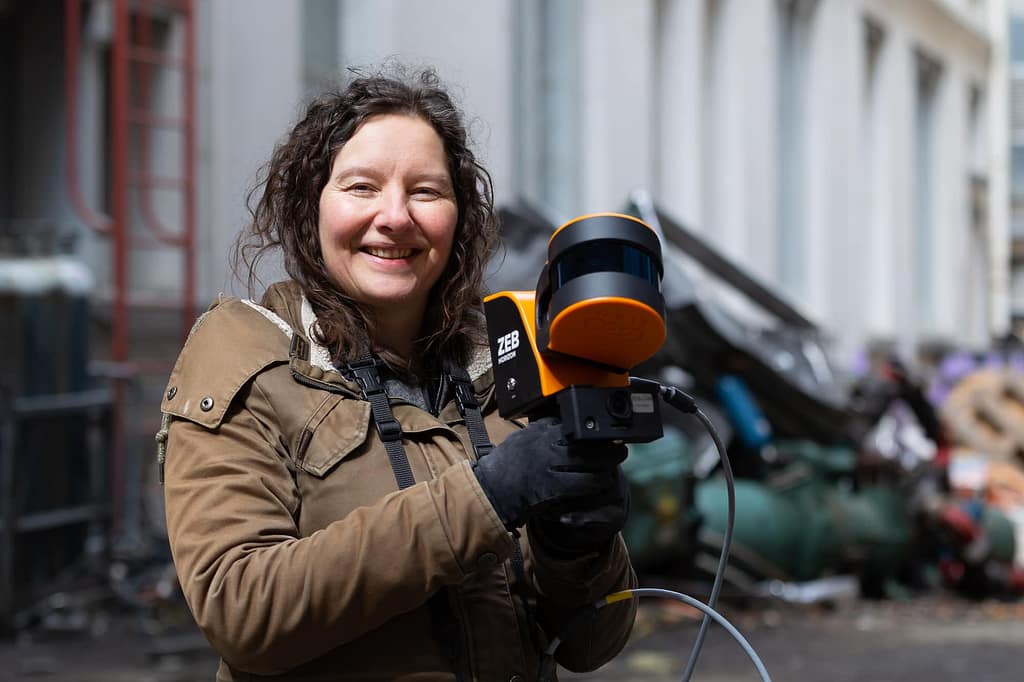
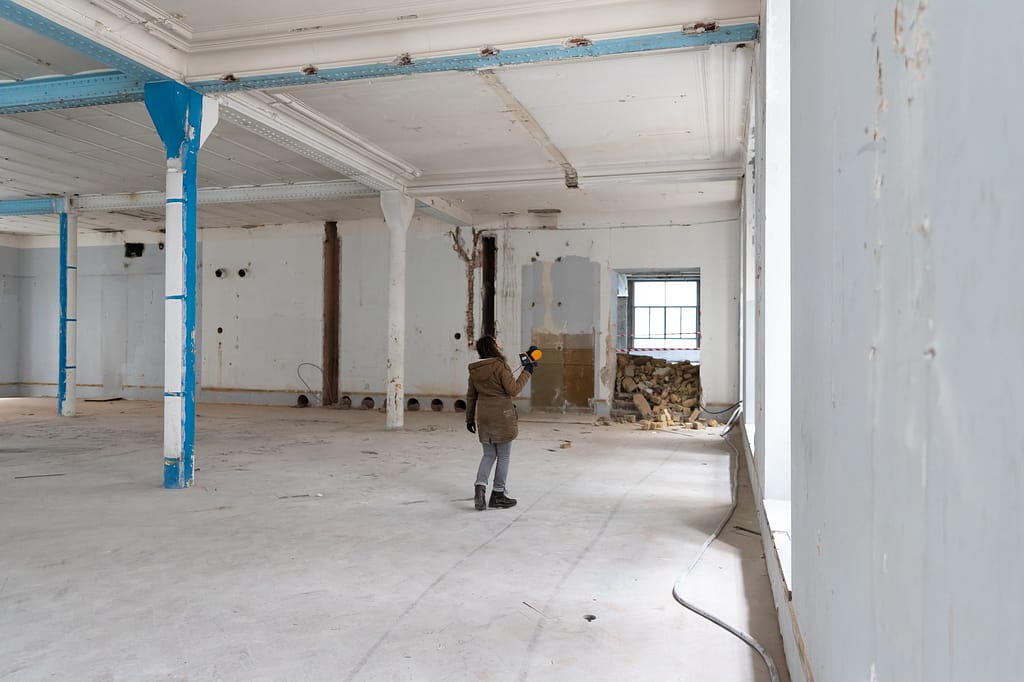
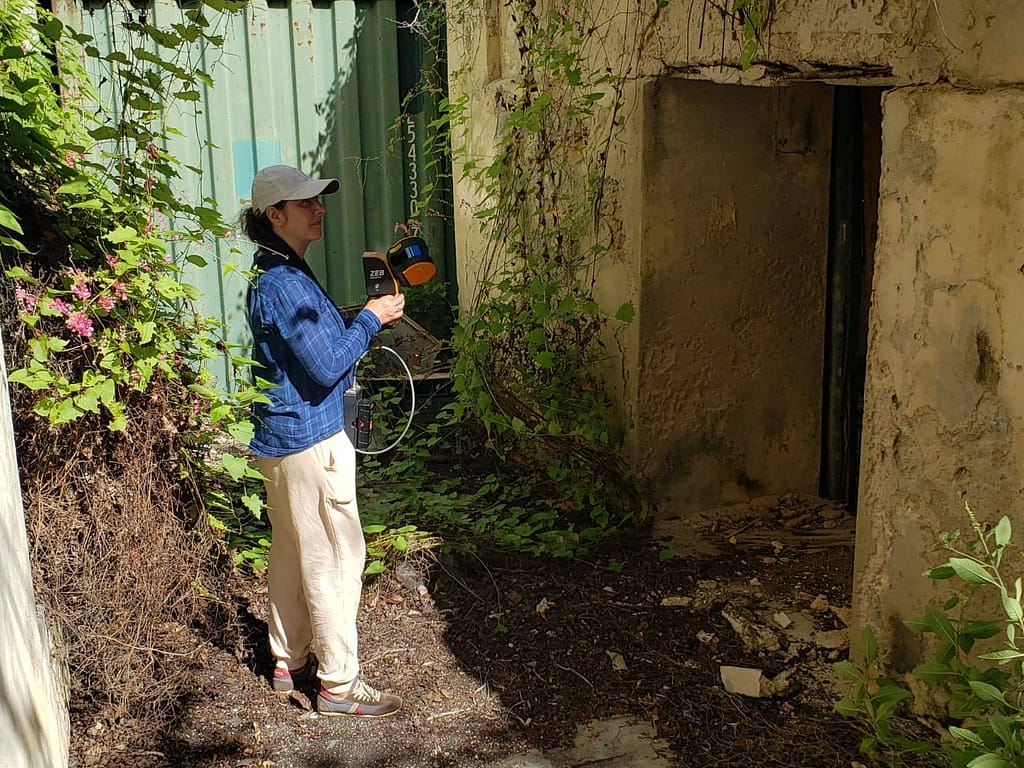
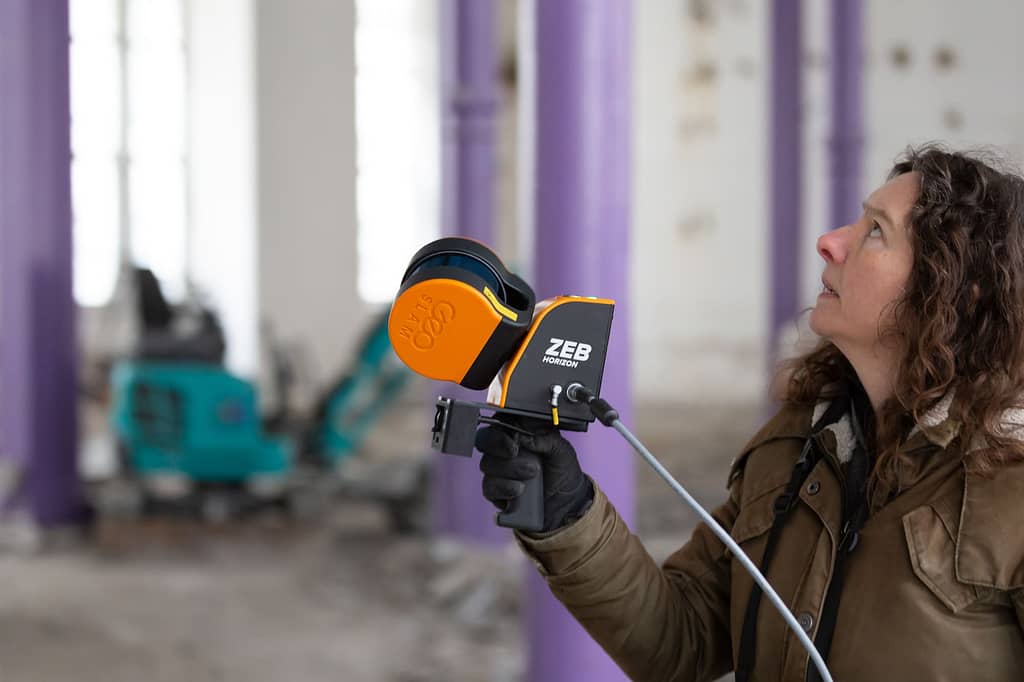
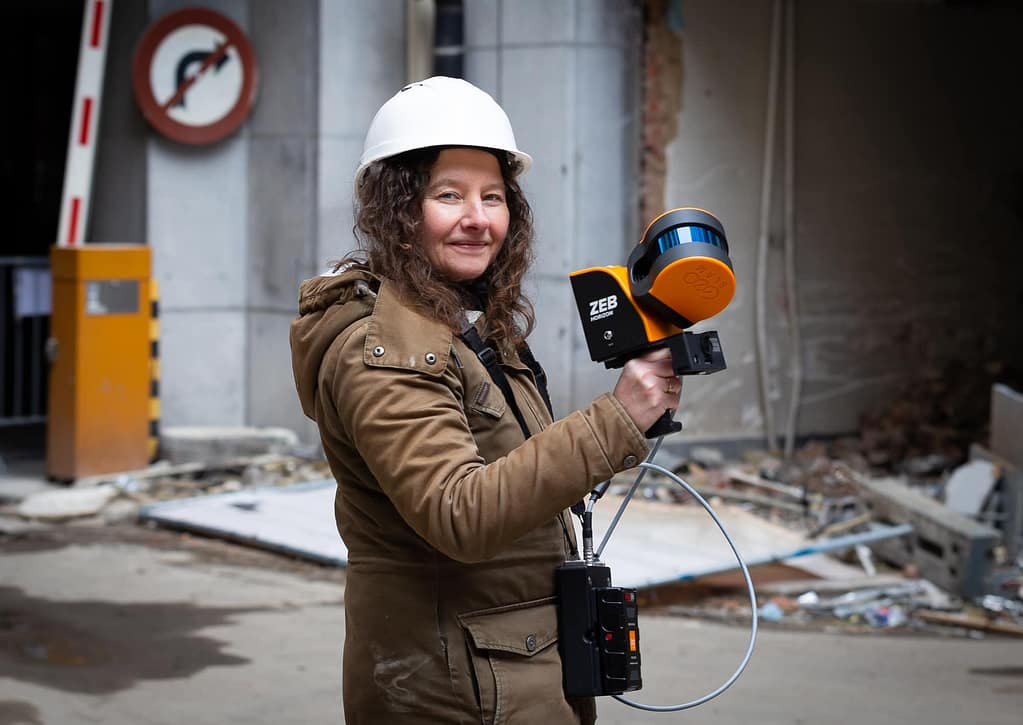
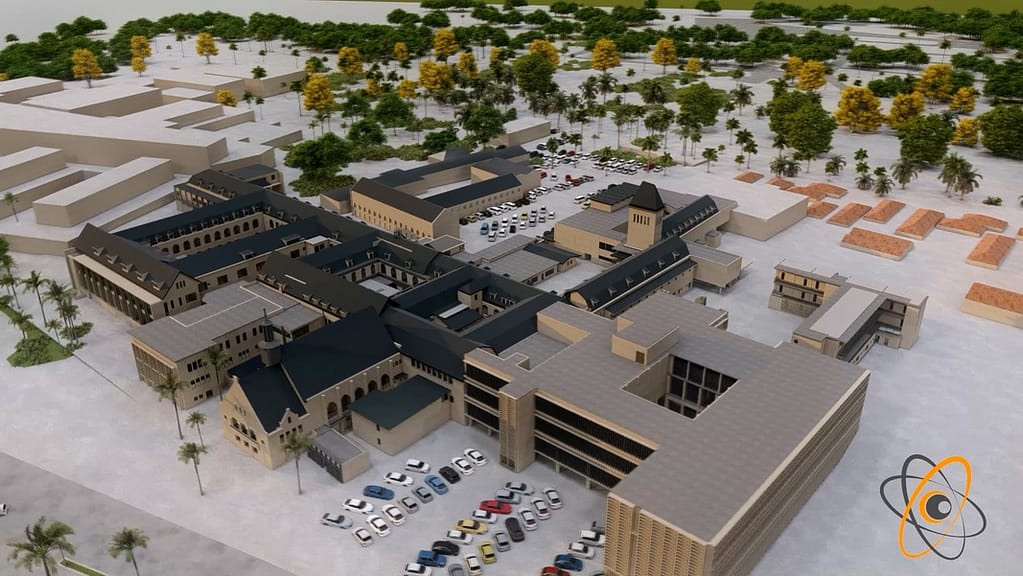
Post scan
The scans were processed and merged using GeoSLAM Hub before they were converted in Autodesk Recap and taken into Autodesk Revit to be modelled. The model of the hospital was sent to the client and the process from capture to model was documented in a video, which can be seen here:
If you’d like to learn more about how GeoSLAM solutions can help you, submit the form below.
Location: Essex, UK
ZEB Scanner: ZEB Revo RT
Scan time: 20 Minutes
This data was captured as part of GeoSLAM’s Big SLAM Tour in 2021. Click here to learn more about the scan
Would you like to see a specific dataset that’s not on this page? Contact [email protected]
Location: Europe
ZEB Scanner: ZEB Revo RT
Scan time: 20 Minutes
GeoSLAM’s ZEB Pano was used to capture images of the distillery.
Would you like to see a specific dataset that’s not on this page? Contact [email protected]
Location: London, United Kingdom
ZEB Scanner: ZEB Horizon
Scan time: 5 Minutes
This data was georeferenced with the ZEB Locate accessory and captured as part of the Big SLAM Tour of the UK, read about it here.
Would you like to see a specific dataset that’s not on this page? Contact [email protected]
Location: Europe
ZEB Scanner: ZEB Horizon
Scan time: 20 Minutes
Would you like to see a specific dataset that’s not on this page? Contact [email protected]